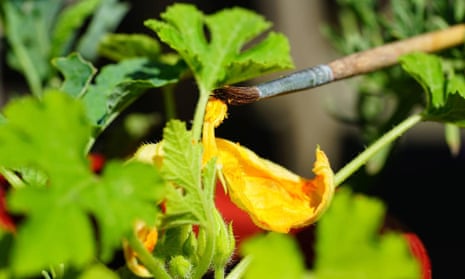It’s spring! The equinox has passed and so the days will be longer than the nights for the next six months. No matter what the weather throws at us (and it’s highly probable that there are frosty mornings still to come), we are categorically in spring. And I’d bet that you, like your fellow gardeners, are busy sowing seeds. Peas, beetroot, lettuce, radishes, spring onions, kohlrabi and more can be sown now.
This time last year, I wrote about the magic of growing plants from seed and this hopeful gesture is an ideal practice to celebrate the return of the light. But this season I want to suggest, as you nudge your seeds into compost, that you contemplate the other end of their life cycle and plan to save their seeds for future years.
The reason many dedicated seed savers engage in this ancient practice is to preserve their favoured crop varieties – and the cultures, histories and food they associate with them.
To successfully save seed that is “true to type” (producing offspring of the same variety), I’ve found that deciding which crops you want to save and how to do so is key.
It helps to really get to know the crops you focus on. By that I mean their reproductive inclination, as the main goal is avoiding cross-pollination between varieties in the same family.
The first seeds I learned how to save were peas, which produce “perfect” flowers (with all the reproductive parts), so they can, and mostly do, self-pollinate. Lettuces also produce perfect flowers and are a good choice to save seed from as most growers remove the flower heads once there are no palatable leaves left. So with no other varieties in bloom nearby, there will be no chance of cross-pollination. Lettuce flower stalks can grow tall and unwieldy, so be prepared to prop them up.
after newsletter promotion
Some crops, including courgettes and pumpkins, develop two types of flower: one producing pollen, and the other fruit. These plants need a conduit (often a pollinating insect) to ensure successful pollination, but this leaves them open to crossing with other plants from the same family. Growing these plants inside an isolation cage made of bamboo canes and insect-proof netting can exclude any pollinators, so you can pollinate (by moving pollen to the fruit-bearing flower) by hand.
I’ve had success saving cucumber seeds by tying a mesh bag over a fruit-bearing flower before it opens, then hand pollinating it using a small paintbrush. I tied a piece of string around the stem of the pollinated fruit so I remembered not to harvest it until its seeds were ripe.
For an even better chance of success, you could grow one variety of crop from each family – some to harvest from, some to save seed from.

Comments (…)
Sign in or create your Guardian account to join the discussion